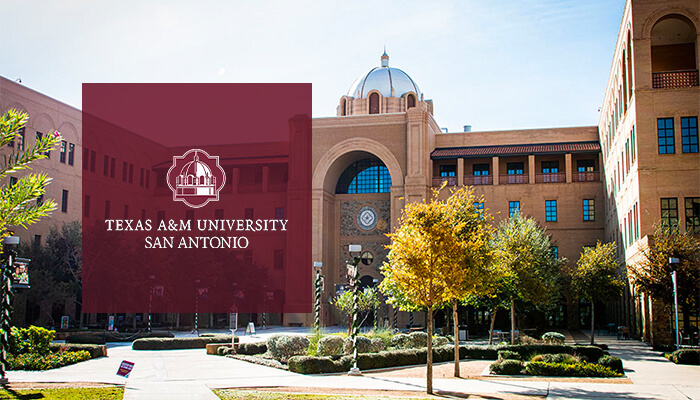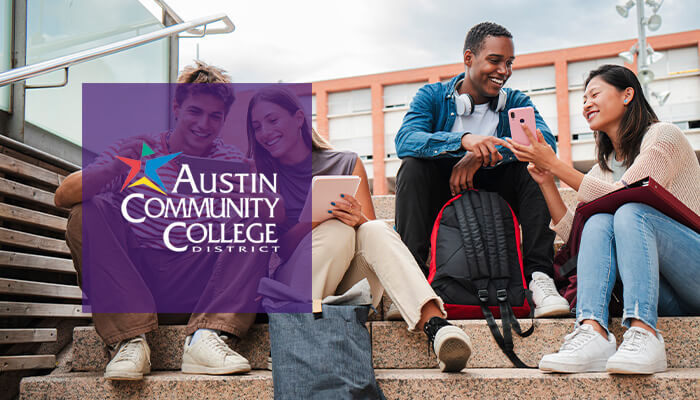
Texas A&M-San Antonio Improves New Student Orientation with Quicker, Smarter Scheduling
Share this Post
The Challenge: New student orientation course scheduling process overwhelmed students, prevented advisors from having meaningful student interactions, and made it harder to manage classroom space and observe bottlenecks in class scheduling effectively.
The Strategy: Implement a student-centered course scheduling software to make it easier for new students to find a schedule that fits their commitments and goals.
The Outcomes: An improved scheduling process led to fewer registration mistakes, better schedules for new students, multiple efficiencies in advising workflows, and more effective use of classroom space.
Texas A&M University-San Antonio serves a student population of more than 7,300 students. From fall 2009 to fall 2022, enrollment grew by 215%, and the university’s current strategic plan strives to further increase overall enrollment and enrollment of specific student populations by 2025.
A&M-San Antonio focuses on delivering a high-quality student experience to meet its enrollment goals. When advising staff noticed how overwhelming it was for new students to plan their course schedules during orientation, they knew they needed a better way to guide students through this process. They found the right solution in Civitas Learning’s student scheduling and registration software.
Adopting a student-centered course scheduling software helps advisors move through the transactional aspects of their work more efficiently to spend more time connecting with students during orientation. The technology solution provides workflow efficiencies like batch upload schedules, eliminating the need to discuss the mechanics of building a schedule and leaving more time for advisors to talk with students about what to expect from their courses.

“We love the ease that Civitas Learning’s scheduling and registration tools have brought to new student orientation. It’s enabled us to have more personal, fun conversations with students that aren’t just about the mechanics of how to build a schedule.”
— Antoinette Curl,
Executive Director of Academic Advising
Texas A&M University-San Antonio
The Challenge: Difficult-to-Navigate Course Scheduling Negatively Impacts Orientation Experience
Before implementing a student-centered course scheduling software, new students were often overwhelmed by sifting through numerous sections of classes to build a schedule using paper and pencil. Identifying course sections that worked with their other commitments and factored in commuting time and breaks between classes was challenging.
Assisting students through the cumbersome schedule-building and registration process took up most of the advisors’ time during orientation, leaving little time to connect with students on a more personal level. Sometimes advising sessions ran long, impacting the rest of the orientation schedule and creating unnecessary stress for students and advisors.
As students and advisors struggled to build workable schedules, the Registrar’s Office lacked the visibility necessary to manage classroom space effectively. They needed a way to avoid course scheduling bottlenecks like an abundance of courses offered simultaneously or low enrollment courses.
They were interested in better understanding when students desired to take courses so they could guide departments to offer courses when students needed them. They sought a more powerful tool to monitor course demand and section fill rates to ensure students could register for the course sections they needed.
The Strategy: Empower Students to Build Better Schedules with Smart Scheduling
To improve students’ scheduling experience, A&M-San Antonio uses a software solution that lets students quickly and easily see all possible schedules based on their unique needs. Students can skip time-consuming searches through the entire course schedule by inputting the classes they need, preferred class times and days, and breaks for commuting, working, and other commitments. An autogenerated, complete list of all feasible schedules that meet their criteria means students can easily view and choose the optimal schedule for their busy lives.
With student-centered course scheduling software, A&M-San Antonio’s advisors can more effectively collaborate with students in the schedule-building process by inserting classes into the scheduling platform for the student to review, generate workable schedules, and register. This works well for virtual advising appointments and increases student agency in schedule-building.
3 Ways A&M-San Antonio Delivers a Better Orientation Experience with Improved Scheduling:
- Schedule options are presented to students based on their needs and preferences.
Instead of searching the entire course schedule for the class section that works for them, A&M-San Antonio students enter multiple parameters. They are presented with all of the possible schedules that meet those parameters. Rather than building a schedule course-by-course, students can easily see all available schedule options and choose the one that works best for them.
This not only reduces students’ confusion and stress about building a good schedule, but it also helps prevent mistakes students sometimes make in the registration process when they have difficulty finding classes that work with their other responsibilities.
- Advisors and students have more time to connect on a personal level.
Students need to leave orientation feeling excited about their chosen school and ready for the semester to begin. This happens when students make personal connections with fellow students, professors, and staff during orientation.
Because Civitas Learning’s student scheduling and registration make it easier for students to build a great schedule, advisors can spend less time during orientation explaining the process and more time connecting with students.
This has been a significant win for academic advisors at A&M-San Antonio. “We love the ease of scheduling that Civitas Learning’s scheduling and registration tools have brought to new student orientations,” says Executive Director of Academic Advising Antoinette Curl. “It has enabled us to have more personal, fun conversations with students that aren’t just about the mechanics of building a schedule.”
- Orientation stays on schedule with quicker and more efficient registration sessions.
Keeping orientation flowing and on schedule is sometimes a challenge. When it’s easier for students to move through the scheduling and registration process, students and staff have a smoother, less stressful orientation experience.
The Outcome: Better Scheduling Ignites Multiple Improvements for Students and Staff
Improving the scheduling process during new student orientation has resulted in several positive outcomes for A&M-San Antonio students and staff.
- Students find it easier to create a great schedule and make fewer registration errors.
By implementing a technology-supported scheduling solution, A&M-San Antonio improved the new student orientation experience, making it easier for students to find a great schedule and making it possible for advisors and students to connect on a more personal level.
Students are less overwhelmed by the process and make fewer registration errors that might keep them from graduating on time and within budget. Orientation runs more smoothly, thanks to efficient registration sessions. Plus, students can access this tool throughout their academic experience to build workable schedules to progress toward timely graduation.
- Advisors have more meaningful interactions with students and spend less time on the transactional details of building a schedule.
A&M-San Antonio’s advisors now find it easier to fill classes more evenly. When students must make last-minute schedule changes, advisors can limit searches only to show sections with available seats or identify sections taught in the specific modality the student needs. The new scheduling capabilities also make it easier for advising staff to communicate demand for courses to academic departments and to advocate for students when it becomes challenging to create a balanced schedule.
- Improved visibility of available sections supports more balanced student schedules and more efficient use of classroom space and instructional resources.
The Registrar’s Office team has found that the Civitas Learning platform makes monitoring fill rates and course project demand easier. This helps the Registrar’s Office staff work with department chairs to efficiently use classroom space and instructional resources to minimize waste by offering desired courses when students need them.
Easier Course Scheduling Leads to A Better Student Experience
A&M-San Antonio’s administrators and staff realized that providing an excellent scheduling experience for students was important to their goal of delivering a high-quality first-year student experience. Implementing a technology-supported scheduling solution achieved many positive outcomes for students, advisors, and staff in the Registrar’s Office.
Making it easier for students to build a great schedule demonstrates that your institution strives to provide an excellent student experience.


